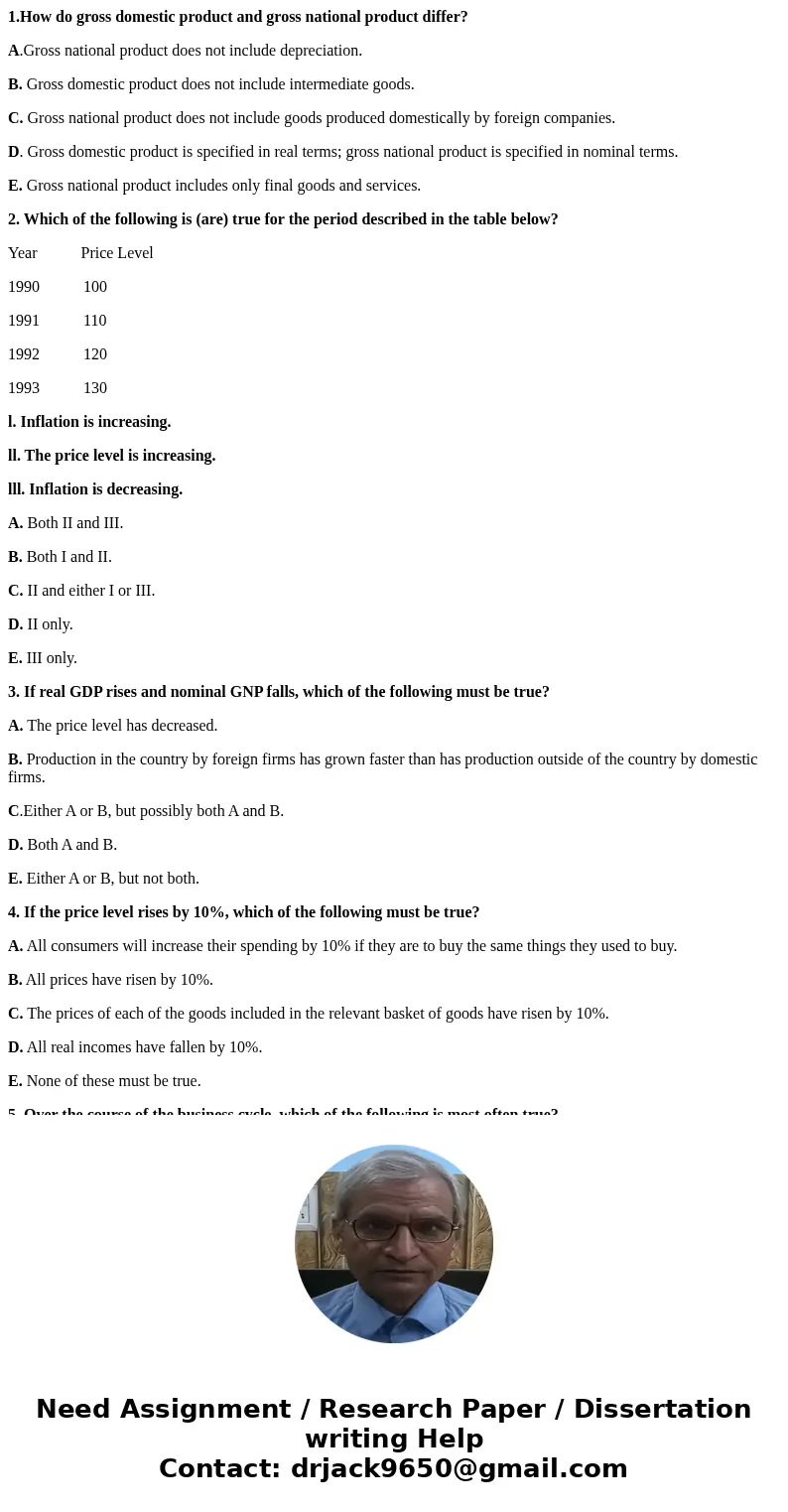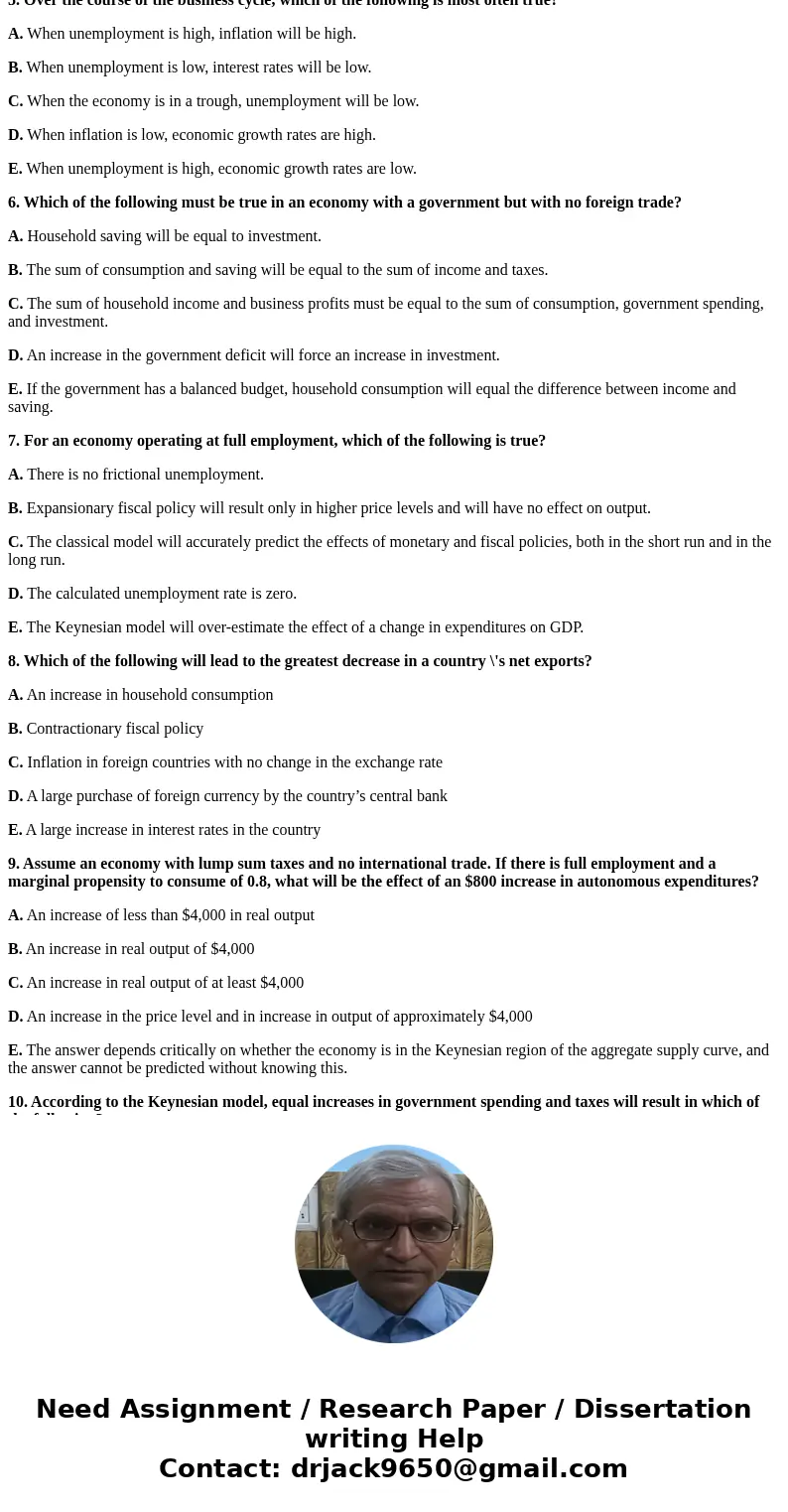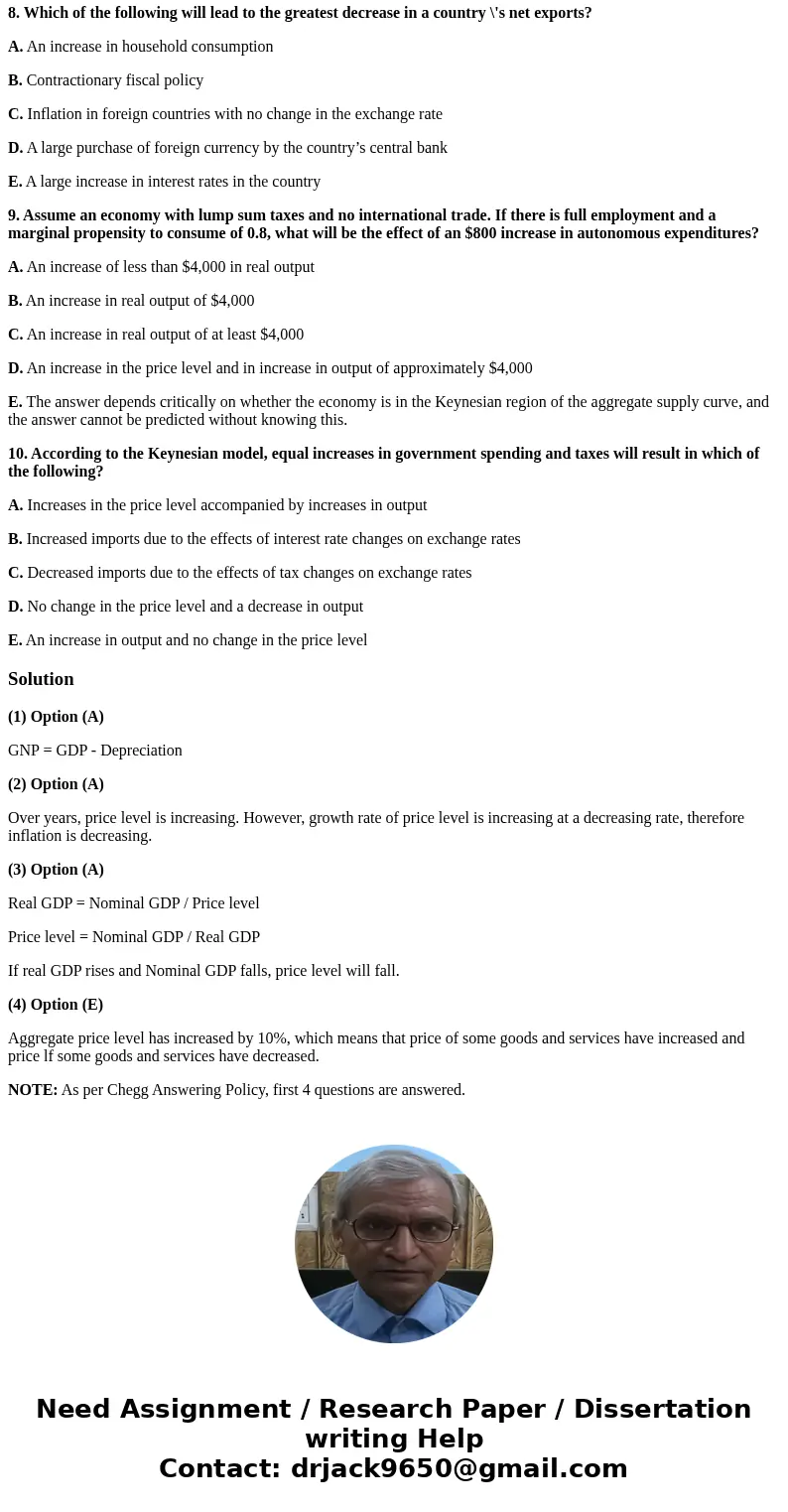1How do gross domestic product and gross national product di
1.How do gross domestic product and gross national product differ?
A.Gross national product does not include depreciation.
B. Gross domestic product does not include intermediate goods.
C. Gross national product does not include goods produced domestically by foreign companies.
D. Gross domestic product is specified in real terms; gross national product is specified in nominal terms.
E. Gross national product includes only final goods and services.
2. Which of the following is (are) true for the period described in the table below?
Year Price Level
1990 100
1991 110
1992 120
1993 130
l. Inflation is increasing.
ll. The price level is increasing.
lll. Inflation is decreasing.
A. Both II and III.
B. Both I and II.
C. II and either I or III.
D. II only.
E. III only.
3. If real GDP rises and nominal GNP falls, which of the following must be true?
A. The price level has decreased.
B. Production in the country by foreign firms has grown faster than has production outside of the country by domestic firms.
C.Either A or B, but possibly both A and B.
D. Both A and B.
E. Either A or B, but not both.
4. If the price level rises by 10%, which of the following must be true?
A. All consumers will increase their spending by 10% if they are to buy the same things they used to buy.
B. All prices have risen by 10%.
C. The prices of each of the goods included in the relevant basket of goods have risen by 10%.
D. All real incomes have fallen by 10%.
E. None of these must be true.
5. Over the course of the business cycle, which of the following is most often true?
A. When unemployment is high, inflation will be high.
B. When unemployment is low, interest rates will be low.
C. When the economy is in a trough, unemployment will be low.
D. When inflation is low, economic growth rates are high.
E. When unemployment is high, economic growth rates are low.
6. Which of the following must be true in an economy with a government but with no foreign trade?
A. Household saving will be equal to investment.
B. The sum of consumption and saving will be equal to the sum of income and taxes.
C. The sum of household income and business profits must be equal to the sum of consumption, government spending, and investment.
D. An increase in the government deficit will force an increase in investment.
E. If the government has a balanced budget, household consumption will equal the difference between income and saving.
7. For an economy operating at full employment, which of the following is true?
A. There is no frictional unemployment.
B. Expansionary fiscal policy will result only in higher price levels and will have no effect on output.
C. The classical model will accurately predict the effects of monetary and fiscal policies, both in the short run and in the long run.
D. The calculated unemployment rate is zero.
E. The Keynesian model will over-estimate the effect of a change in expenditures on GDP.
8. Which of the following will lead to the greatest decrease in a country \'s net exports?
A. An increase in household consumption
B. Contractionary fiscal policy
C. Inflation in foreign countries with no change in the exchange rate
D. A large purchase of foreign currency by the country’s central bank
E. A large increase in interest rates in the country
9. Assume an economy with lump sum taxes and no international trade. If there is full employment and a marginal propensity to consume of 0.8, what will be the effect of an $800 increase in autonomous expenditures?
A. An increase of less than $4,000 in real output
B. An increase in real output of $4,000
C. An increase in real output of at least $4,000
D. An increase in the price level and in increase in output of approximately $4,000
E. The answer depends critically on whether the economy is in the Keynesian region of the aggregate supply curve, and the answer cannot be predicted without knowing this.
10. According to the Keynesian model, equal increases in government spending and taxes will result in which of the following?
A. Increases in the price level accompanied by increases in output
B. Increased imports due to the effects of interest rate changes on exchange rates
C. Decreased imports due to the effects of tax changes on exchange rates
D. No change in the price level and a decrease in output
E. An increase in output and no change in the price level
Solution
(1) Option (A)
GNP = GDP - Depreciation
(2) Option (A)
Over years, price level is increasing. However, growth rate of price level is increasing at a decreasing rate, therefore inflation is decreasing.
(3) Option (A)
Real GDP = Nominal GDP / Price level
Price level = Nominal GDP / Real GDP
If real GDP rises and Nominal GDP falls, price level will fall.
(4) Option (E)
Aggregate price level has increased by 10%, which means that price of some goods and services have increased and price lf some goods and services have decreased.
NOTE: As per Chegg Answering Policy, first 4 questions are answered.



 Homework Sourse
Homework Sourse